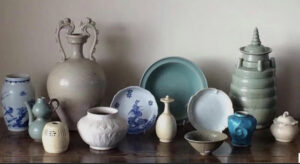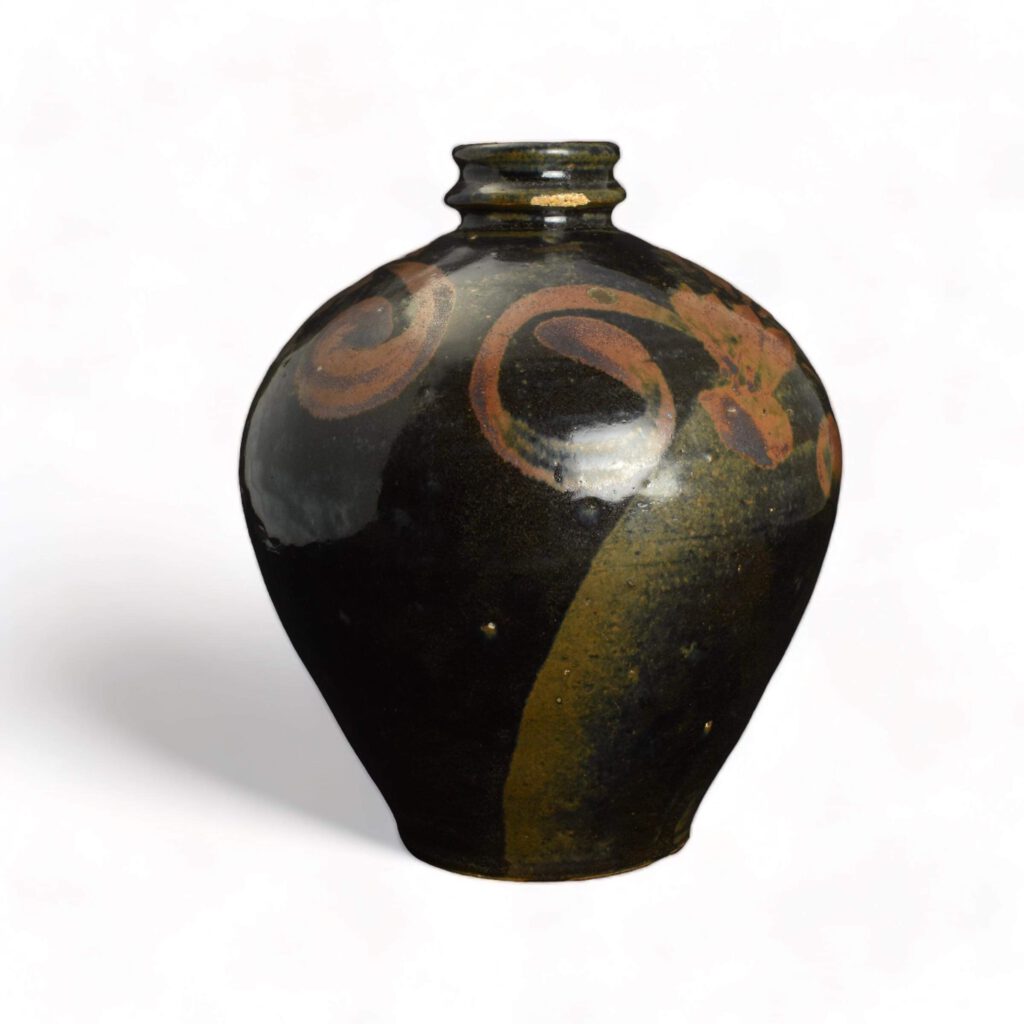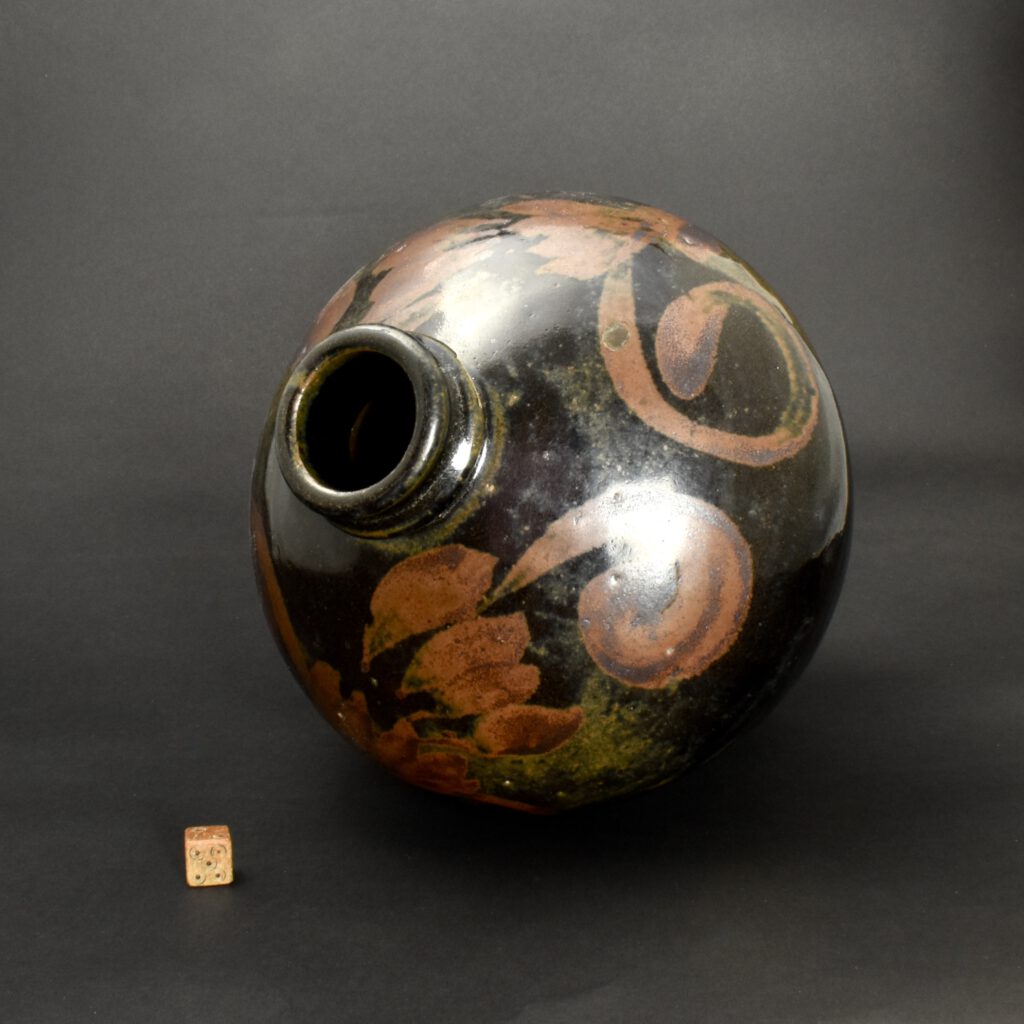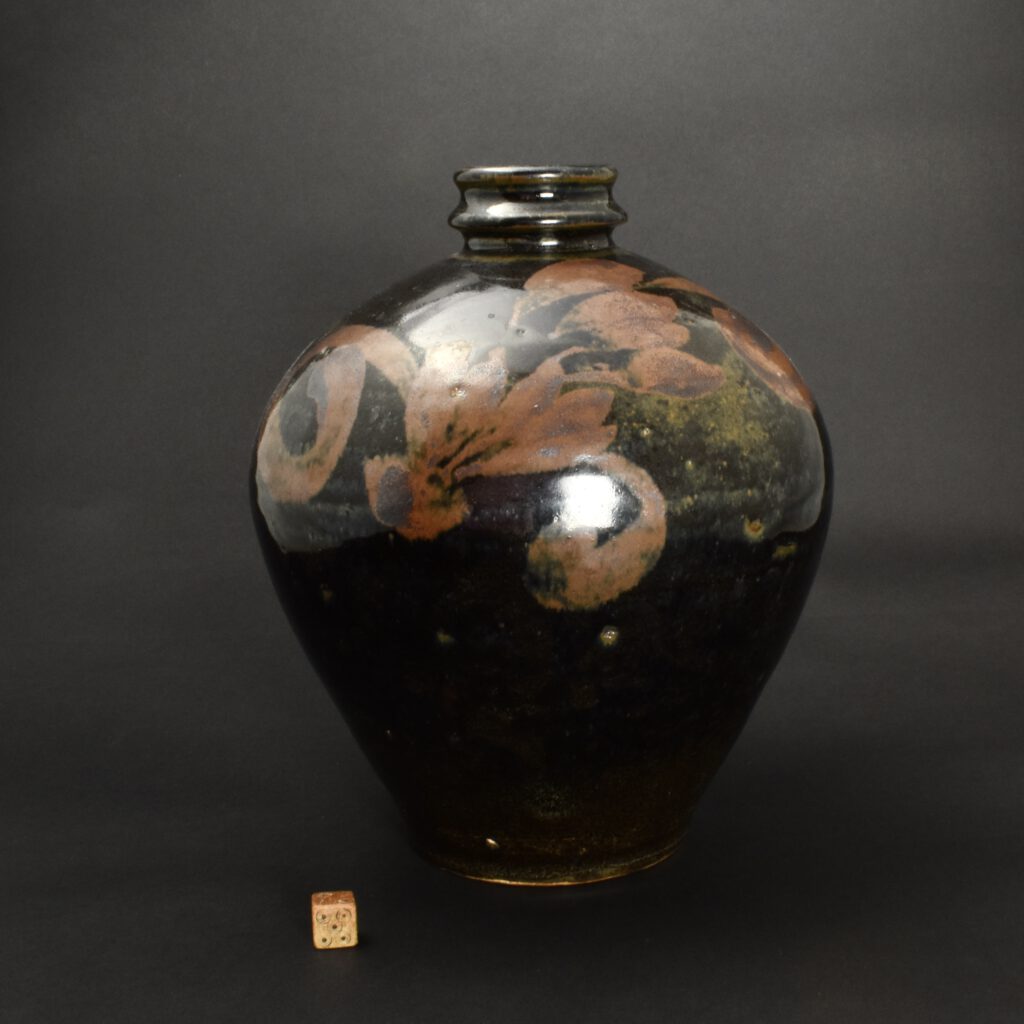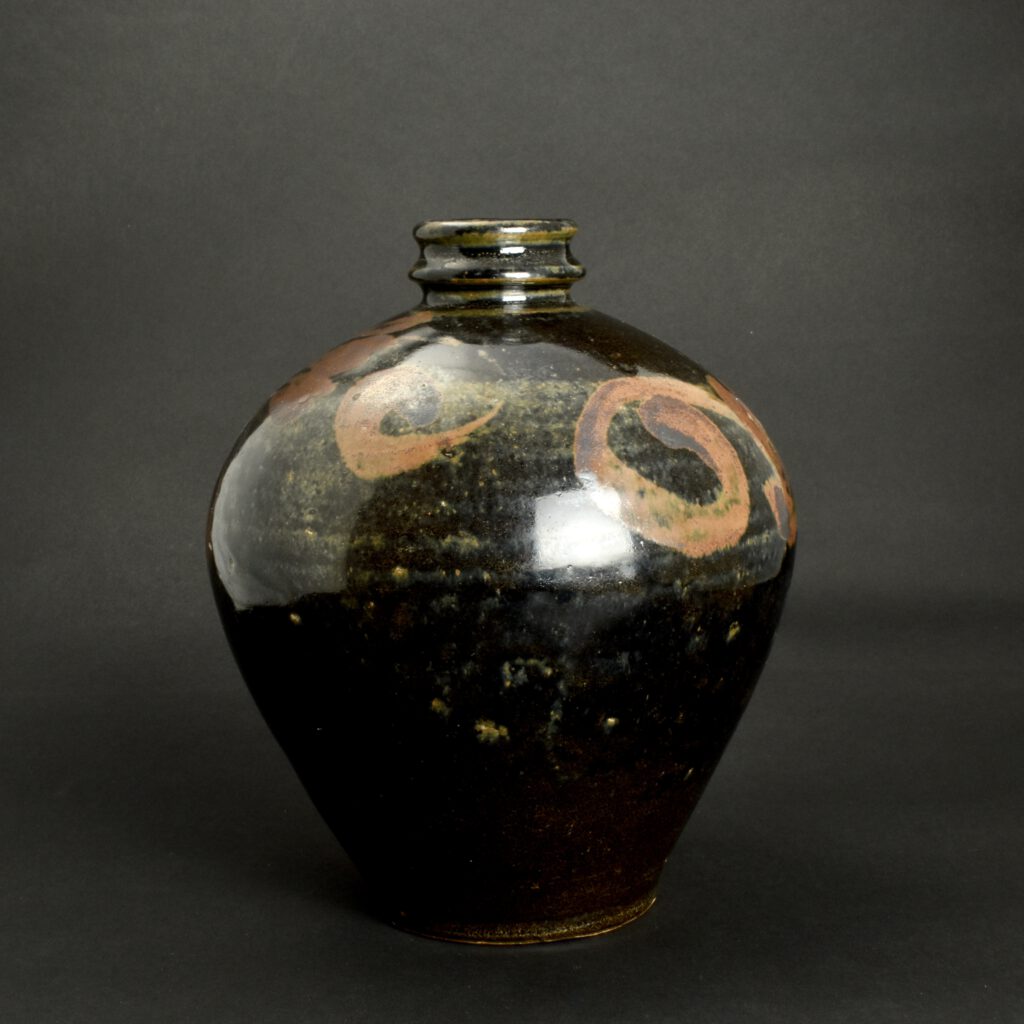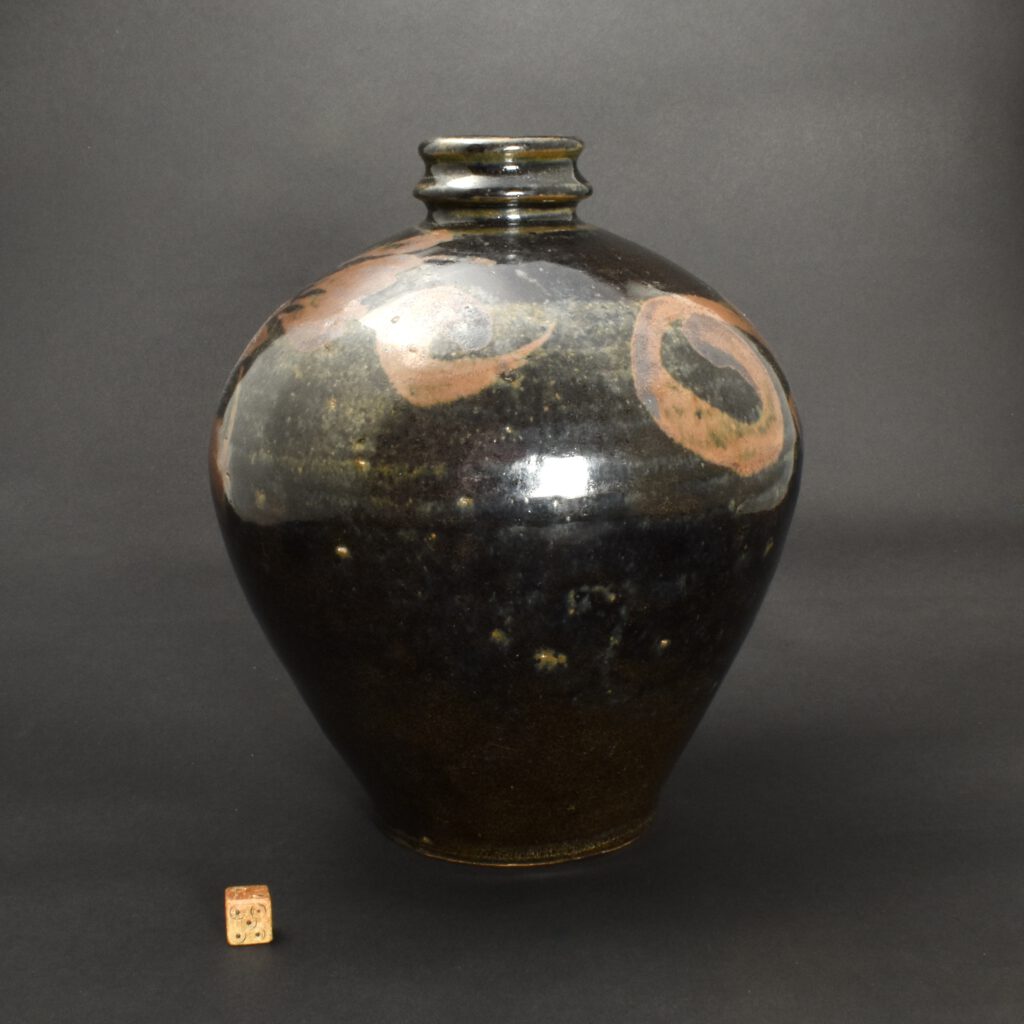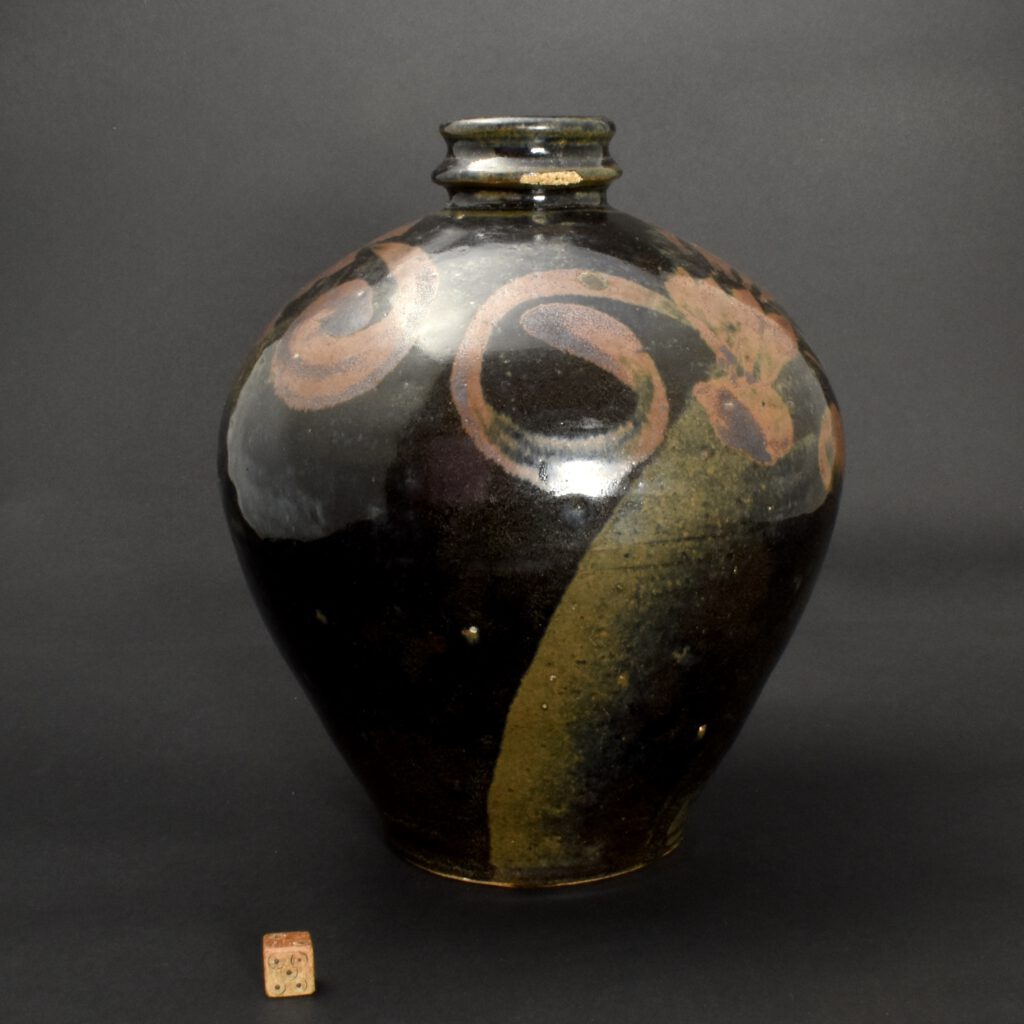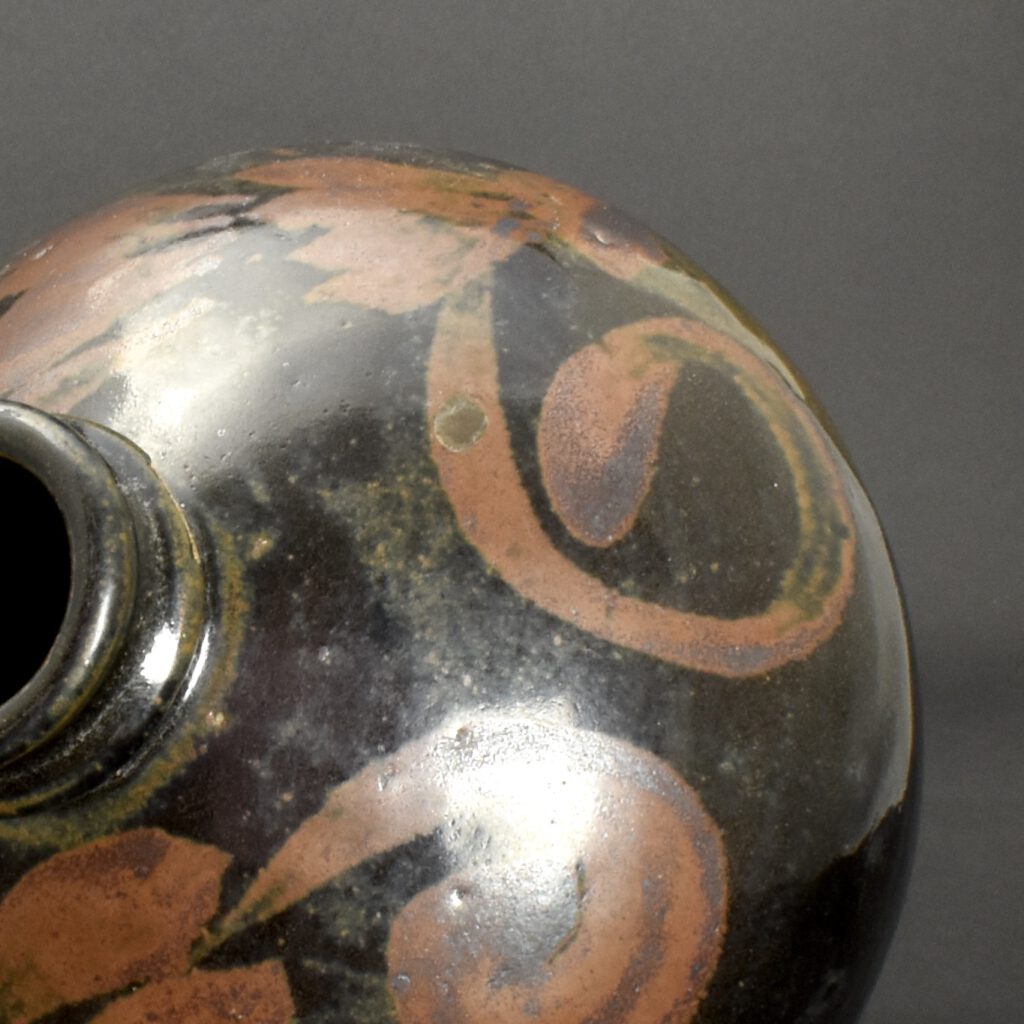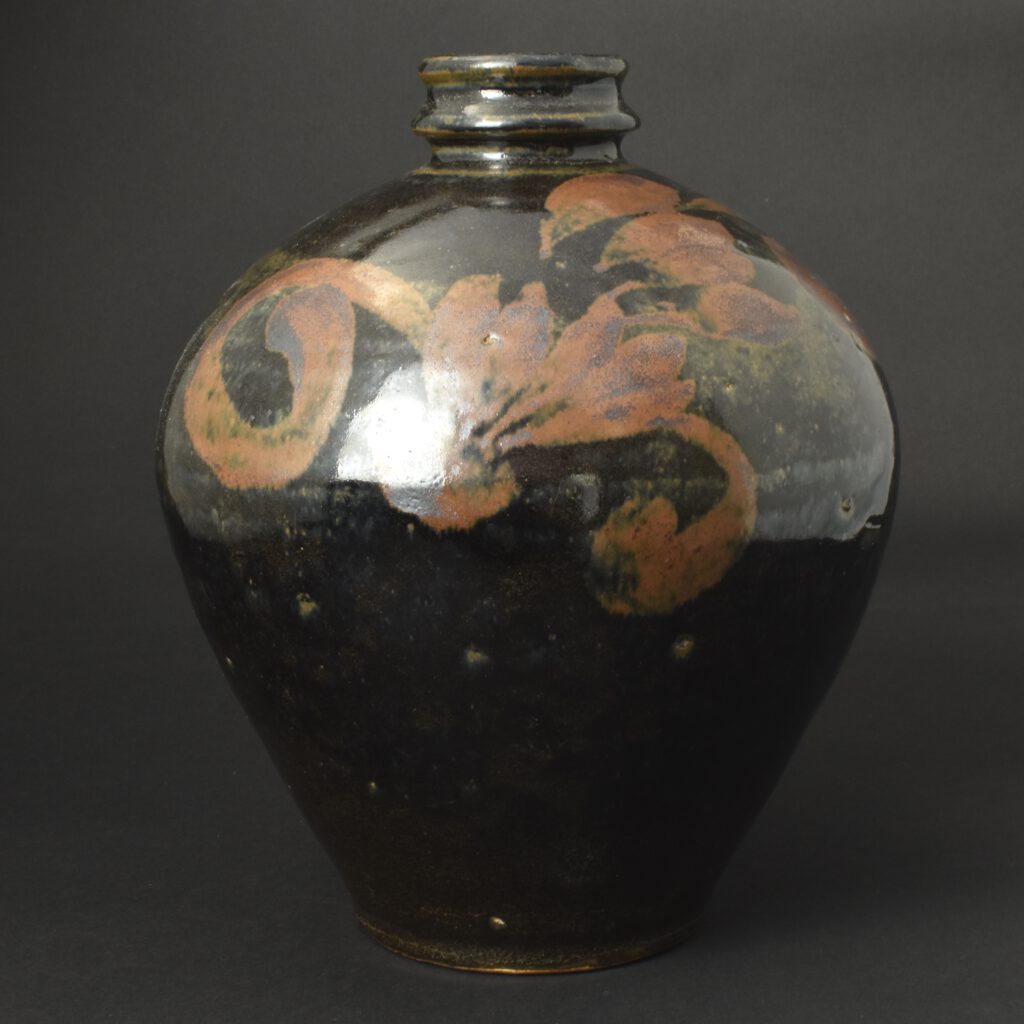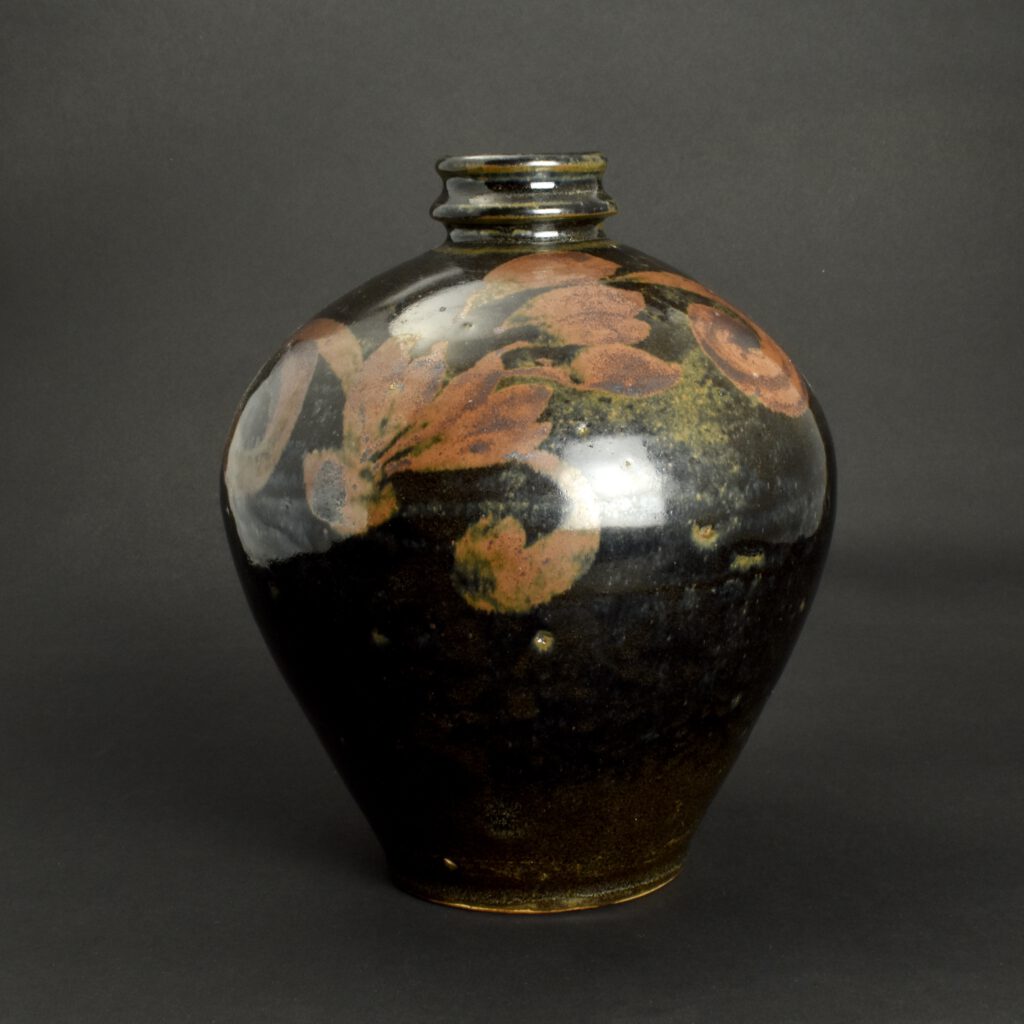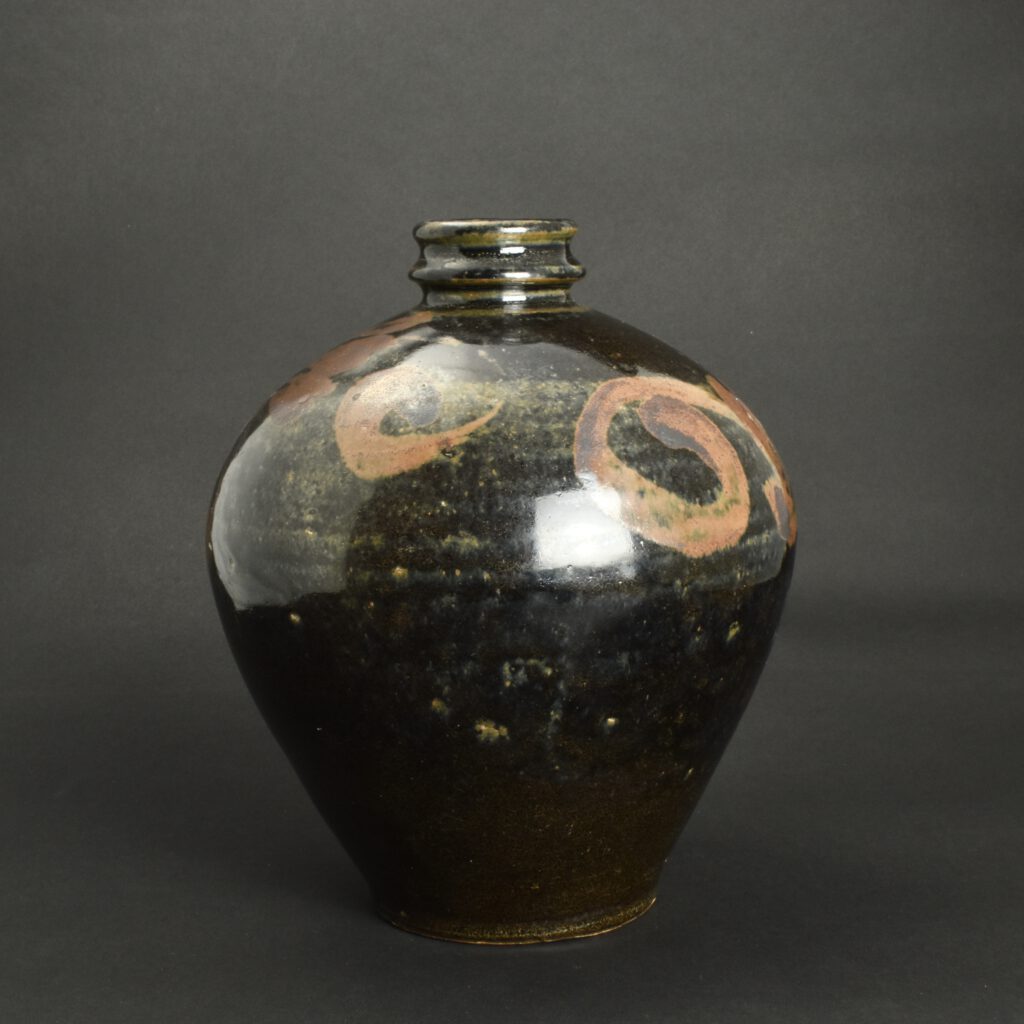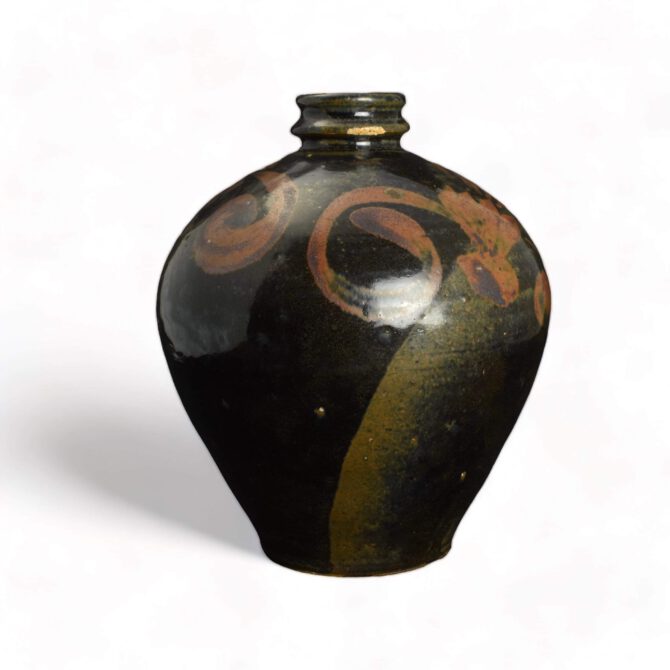
A Northern Song or Jin Russet Decorated Black Glazed Jar
A Northern Song or Jin Russet Decorated Black Glazed Vase, 12th or 13th Century, Henan or Shandong province. This Song or Jin baluster vase has been applied with two layers of iron-rich glaze over the rather rough body, the russet brown decoration is a rather abstract, it is an impression of a flower and its leaves. The double ring neck is typical of these ‘Henan’ vases. A very similar vase, dated to the Jin Dynasty is illustrated in Chinese Ceramics, The New Standard Guide, From the Asian Museum in San Francisco and another vase of this type is in the Meiyintang Collection, see ‘References’.
See Below For More Photographs and Information.
SOLD
- Condition
- In good condition, some glaze loss to the lower neck ring. A small piece of glaze missing, that has been filled, see the photograph gallery below.
- Size
- 21.6 cm (8 1/2 inches)
- Provenance
- Bought from 20th of October 2000 from Tony Omura in Hong Kong. Nicholas de la Mare Thompson (1928-2010), the grandson of the author Walter de la Mare spent his career in publishing. See below for more information about Mr. Thompson.
- Stock number
- 27156
- References
- For a very similar vase dated to the Jin dynasty (1115-1234) is illustrated in : Chinese Ceramics, The New Standard Guide From the Asian Museum in San Francisco (Hi Li, Thames and Hudson 1996. ISBN 0-500-23727-1) page 166, plate 309. For a similar vase, but with a bird design see : Chinese Ceramics from the Meiyintang Collection, Volume One (Regina Krahl, Azimuth Editions 1994. ISBN 1-8985592-02-0) page 254, item 465.
Information
Nicholas de la Mare Thompson (1928-2010)
Nicholas de la Mare Thompson, the grandson of the author Walter de la Mare spent his career in publishing. He started at Nesbit where he was editor of the Janet and John series of children’s books but not all of his career was so safe. He wrestled with W.H. Smith over the content of Madonna’s raunchy Sex book on behalf of Paul Hamlyn’s Octopus Group and defeated Margaret Thatcher over Spycatcher. He could not bare dogma or hypocrisy.
It was hardly surprising that as a committee member of the O.C.S. he had his own ideas. He read and could recite great swaths of the articles of the Society, he used this not to attack but to stimulate debate. He approached the Society in the same way as he approached his understanding of Chinese ceramics, by stripping it down and starting again using clear empirical thinking. He was very concerned the Society was open to all and was run for the benefit of all members.
Nicholas came from a family of collectors, his love of oriental ceramics was broad but his focus was on early monochromes, especially those from the Song dynasty. He bought what he loved, what he thought had merit, not what was said to be good, and certainly not anything because it was fashionable. He didn’t have a stamp collectors’ approach, filling in the gaps of pre-existing ordered collection, rather he would react to an object, feeling it was right for his collection. Sometimes he wasn’t sure if it was right for his collection or not. He would then “borrow” pieces and live with them, other times he would ask his wife Caroline, who’s eye he trusted, if he should keep the piece or not. He was amused because I was often able to know if he would keep a piece before he did. We discussed “pots” endlessly, he loved to talk about ceramics with a wide variety of people and enjoyed the company of others on O.C.S. trips as well as in discussion groups or anywhere else. Later on he combined his love of Chinese ceramics with his love of books by extending his library to include rare early books, he used these to trace the development of collecting and scholarship in the 19th and early 20th century. He was fascinated by earlier scholarship, what was not understood but also what they understood, and we have lost. He was always reading and wanted to know more right up to the end, he didn’t see impending death as a barrier to knowledge or indeed collecting. The week before he died he questioned, if only for a second, whether it was too late to buy another pot for the collection. He concluded it was not, he was a true collector.
Nicolas died on the 25th of April 2010 at the age of 82 after living with cancer for two years. He leaves behind his energetically supportive wife Caroline and his three children. He was a kind, gentle and incredibly civilised man with a very sharp mind and dry sense of humour, he was passionate about the Society, its aims and its members. He was an incredibly supportive and thoughtful friend and will be missed very much.
